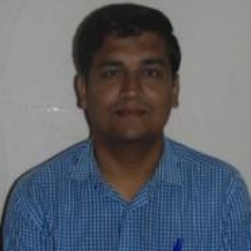
Sarang Dagajirao
Work place: Department of Electronics and Telecommunication Engineering, NES’s Gangamai College of Engineering, Nagaon, Maharashtra, India
E-mail: saarangpatil@gmail.com
Website:
Research Interests: Wireless Sensor Networks
Biography
Dr. Sarang Dagajirao Patil received a Bachelor of Engineering degree in Electronics & Telecommunication from Pune University (Maharashtra) in 2007 and a Master of Engineering in Electronics Engineering from Dr. Babasaheb Ambedkar Marathwada University, Aurangabad in 2012. He joined as a research scholar at North Maharashtra University in 2018. HE received his PhD degree from KBC North Maharashtra University in September 2024. His current research interest is in wireless sensor networks. Presently he is working as Assistant Professor in Dept.of Electronics & Telecommunication at Gangamai College of Engineering, Dhule, Maharashtra
Author Articles
A Hybrid PSO-GSA Approach for Cluster Head Selection and Fuzzy Logic Data Aggregation in DEEC-based WSNs
By Sarang Dagajirao Pravin Sahebrao Patil.
DOI: https://doi.org/10.5815/ijcnis.2025.04.04, Pub. Date: 8 Aug. 2025
Wireless sensor networks (WSNs) play a critical role in various applications such as environmental monitoring, healthcare, and industrial automation. The Distributed Energy-Efficient Clustering (DEEC) algorithm has been widely used for efficient data gathering and energy management in WSNs. However, the selection of cluster heads (CHs) in DEEC and data aggregation remain challenging tasks that significantly impact the performance and lifetime of the network. In this paper, we propose a novel approach for cluster head selection in the Distributed Energy-Efficient Clustering (DEEC) algorithm, utilizing the Particle Swarm Optimization-Gravitational Search Algorithm (PSO-GSA). Our approach enhances the CH selection process in DEEC by leveraging the strengths of both PSO and GSA, resulting in more optimal CH selection considering energy efficiency and network coverage. Furthermore, we employ fuzzy logic for data aggregation, which improves the accuracy and efficiency of sensor data aggregation. Our proposed hybrid approach, combining PSO-GSA for CH selection and fuzzy logic for data aggregation, is unique and original, and contributes to the advancement of WSNs and optimization techniques. Through extensive simulations and analysis, we demonstrate the effectiveness and superiority of our proposed approach over existing methods. This paper presents a significant advancement in WSN optimization techniques, promising enhanced energy efficiency and robustness in practical applications. Our approach achieves up to 36.66% and 60.45% increase in first node dead compared to DEEC in DL-DEEC with DA, highlighting its superior performance in prolonging network lifetime.
[...] Read more.Other Articles
Subscribe to receive issue release notifications and newsletters from MECS Press journals